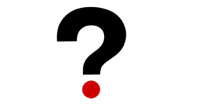Using 911facts.dk

How do you get the most out of this site?
Truth Movement
Publications
Booking

We are available for booking a lecture or a workshop here.

It took several court trials to release images from the Pentagon

Claim
It took several court trials before images from the surveillance cameras at the Pentagon were released to the public.
About 10 images were released, but none showed a passenger plane.0
Background
The claim is used to support the notion that a government conspiracy, and not al Qaeda and Osama bin laden, was behind the terror attack on, among other targets, the Pentagon.
The alleged purpose of preventing the public from seeing these images was to hide that they didn’t show a hijacked plane hitting the building.
Facts
It is incorrect that only about 10 images were released. On May 16, 2006, the Department of Defense released 6 minutes and 43 seconds of video, and 12 frames from the surveillance camera that covered the attack the best.1
It is correct that the surveillance camera does not show a clear image of the hijacked Flight 77. That is to be expected, since surveillance cameras typically do not record live feeds but snaps photos at intervals, in this case one per second. The camera was aimed at an entrance to the Pentagon, and was thus not intended as being able to record an unexpected attack with a passenger plane further away.
Most of the video recordings that were submitted to the FBI would probably not have contributed to the investigation, in the sense that they did not show what happened. One surveillance camera from a nearby Citgo gas station turned out to be facing away from the impact and did not show the attack at all.1
As is the case in Denmark, the police in the U.S. are the only ones who can release surveillance videos, or other evidence, from crime scenes. The FBI has released two surveillance videos from the Pentagon that showed the attack, and has additionally released surveillance videos from a nearby gas station and a nearby hotel, after the trial of Zacarias Moussaoui was over.2
In addition to these videos, the FBI also seized a number of videos from private companies and citizens. The FBI can, as police in general, not merely release privately owned recordings to the public, especially not when a crime is still under investigation, and while a trial is being prepared or is going on.
There was no court trial needed for the release of the recordings in question. The Freedom of Information Act of 2004 merely requires a formal request for government documents to be released to the public 4. However, as early as 2002, images from the Pentagon attack were released3.
Freedom of Information Act
FOIA is a federal law in effect since 1967.
Any American citizen has the right, according to this law 4, to demand the publication of government material. The decision to publish must typically be given by a judge, but it is not a question of a trial.
In the years before the terror attack on September 11, 2001, then President Bill Clinton expanded the law to encompass more and more material that could be released.
On November 1, 2001, then President George W. Bush issued Executive Order 132335, which limited the public’s access to the archives of former presidents. The limitation was not intended to prevent material concerning the terror attack on September 11, 2001, from being published. The executive order was later partially revoked by George W. Bush in October 2007 and completely revoked by Barack Obama in 2009, as one of the first actions taken after his inauguration.
Logic
It speaks against a government conspiracy being behind the terror attack on September 11, 2001, that any compromising material would be released. It would be far easier to say that the material “unfortunately” was mislaid or perhaps destroyed by “accident”.
If a government conspiracy intends to hide evidence for the public, it is odd that it happens after the terror attack. If everything was planned and thousands of secret agents were placed around the country, ready to place or remove evidence, why not place a couple of agents where the surveillance cameras were and make sure that those cameras “unfortunately were out of order”?
Conclusion
The claim is therefore:
- False
- Misleading
- Self-contradicting
Sources
- Løbeseddel, i11time.dk
- Security camera, Flight 77, Pentagon
- Prosecution Trial Exhibit P200022, United States v. Zacarias Moussaoui, Criminal No. 01-455-A
- Images show September 11 Pentagon crash, CNN, 7. marts, 2002
- Freedom of Information Act, Wikipedia
- Executive Order 13233, Wikipedia
Q & A

